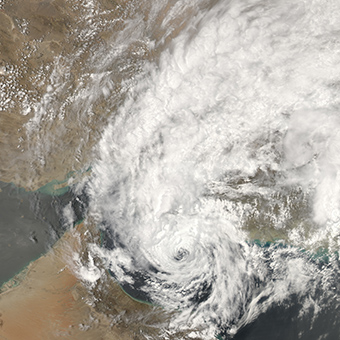An official at the Iran Meteorological Organization has dismissed earlier reports of a possible tropical storm hitting Iran’s southern shore next week.
Ahad Vazifeh, director of IMO’s Forecasting and Early Warning Office, told Mehr News Agency that the organization “never predicted” that a tropical storm would make its way to Iran from Indian Ocean via Sea of Oman.
Earlier this week, the news agency had cited IMO data and reported that analyses of weather patterns by the organization showed a tropical cyclone being formed in the Indian Ocean.
“If no shift is observed in cloud patterns, the cyclone could make its way to Iran’s southern shores in Sistan-Baluchestan and Hormozgan provinces, which access the ocean through Sea of Oman,” the original report said.
According to Vazifeh, while it is possible to deduce the movement of tropical storms through formulas, “it is nonetheless challenging”.
“The storm could make landfall anywhere,” he said, so to say with certainty that it will hit Iran is premature.
The original report said the storm was expected to strike Iran on September 26 and could last for up to five days, but Vazifeh denied IMO has made such a forecast.
A tropical storm is an intense storm characterized by extremely low pressure and swirling wind rotation that usually develops in the tropics. These storms can bring damaging wind and very heavy rain to the areas they pass over. Though tropical storms are less powerful than hurricanes, they can still be quite destructive, causing property damage, injury and death.
Such storms begin as an atmospheric disturbance of low pressure and wind moves into the low-pressure area from the surrounding areas of high pressure. As warm ocean water heats the air, it rises at the center of the developing storm where it condenses and causes thunderstorms.
The system essentially feeds on itself, using warm ocean water as its fuel. Tropical storms usually show a recognizable pattern of rotation when viewed as a satellite image, but do not typically have the well-defined spiral pattern and “eye” associated with hurricanes.
The last deadly tropical storm in Iran’s southern areas occurred in 2007. Called Cyclone Gonu, the devastating storm killed 28 people and caused upward of $200 million in damage.


